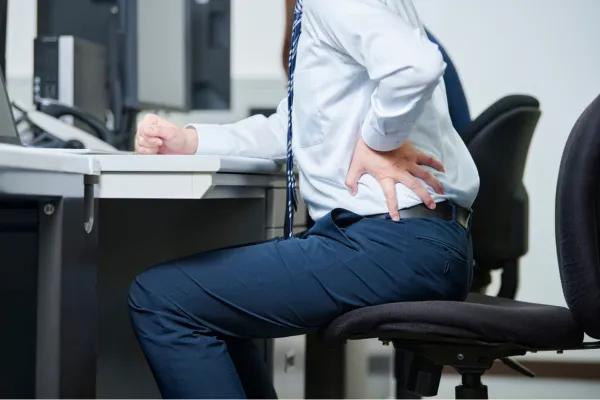
Why Prolonged Sitting is Damaging Your Back (and How to Reverse the Effects)
Introduction
Many of us spend hours each day sitting — at desks, in cars, or relaxing at home. While it may feel comfortable in the moment, prolonged sitting can silently harm your back over time. For some people, this shows up as occasional stiffness; for others, it becomes chronic pain that disrupts daily life.
The problem isn’t just the act of sitting itself — it’s the posture, muscle imbalances, and reduced movement that come with it. In this post, we’ll explore why long hours in a chair can be so damaging to your back and, more importantly, how to reverse the effects.
How Sitting Affects Your Back
1. Weakening Core Muscles
Your core muscles — including your abdominals and lower back — work less when you’re seated. Over time, this leads to weakness and reduced support for your spine.
2. Tight Hip Flexors
Sitting keeps your hips in a flexed position, which shortens the hip flexor muscles. This can tilt your pelvis forward and place extra strain on your lower back.
3. Reduced Blood Flow
Remaining in one position for too long slows circulation to the spine and surrounding muscles, increasing stiffness and discomfort.
4. Poor Posture Over Time
Slouching or leaning forward while sitting increases pressure on the discs in your lower back, which may contribute to disc problems or chronic back pain.
Signs Sitting is Affecting Your Back
You may notice:
Stiffness when standing up after sitting.
Lower back discomfort after long periods at your desk.
Pain that eases when you move or walk.
Tightness in hips and hamstrings.
If these symptoms are familiar, your back may already be feeling the effects of too much sitting.
How to Reverse the Effects
Move Frequently
Aim to stand, stretch, or walk for a few minutes every 30–40 minutes. Even small movement breaks help keep muscles active and joints healthy.
Strengthen Your Core
Exercises like bridges, planks, and bird-dogs can improve spinal support and reduce future pain.
Stretch Tight Muscles
Target your hip flexors, hamstrings, and chest to counteract the hunched posture of sitting.
Optimise Your Workstation
Keep your computer screen at eye level.
Adjust your chair so your feet rest flat on the floor.
Support your lower back with a small cushion if needed.
Consider Professional Help
A chartered physiotherapist can assess your posture, mobility, and muscle balance, providing hands-on treatment and tailored exercises to address pain caused by prolonged sitting.
Final Thoughts
Sitting is a part of modern life, but it doesn’t have to lead to ongoing back problems. By making simple daily adjustments, building strength, and keeping your body moving, you can protect your spine and stay comfortable — even if your work keeps you in a chair.



